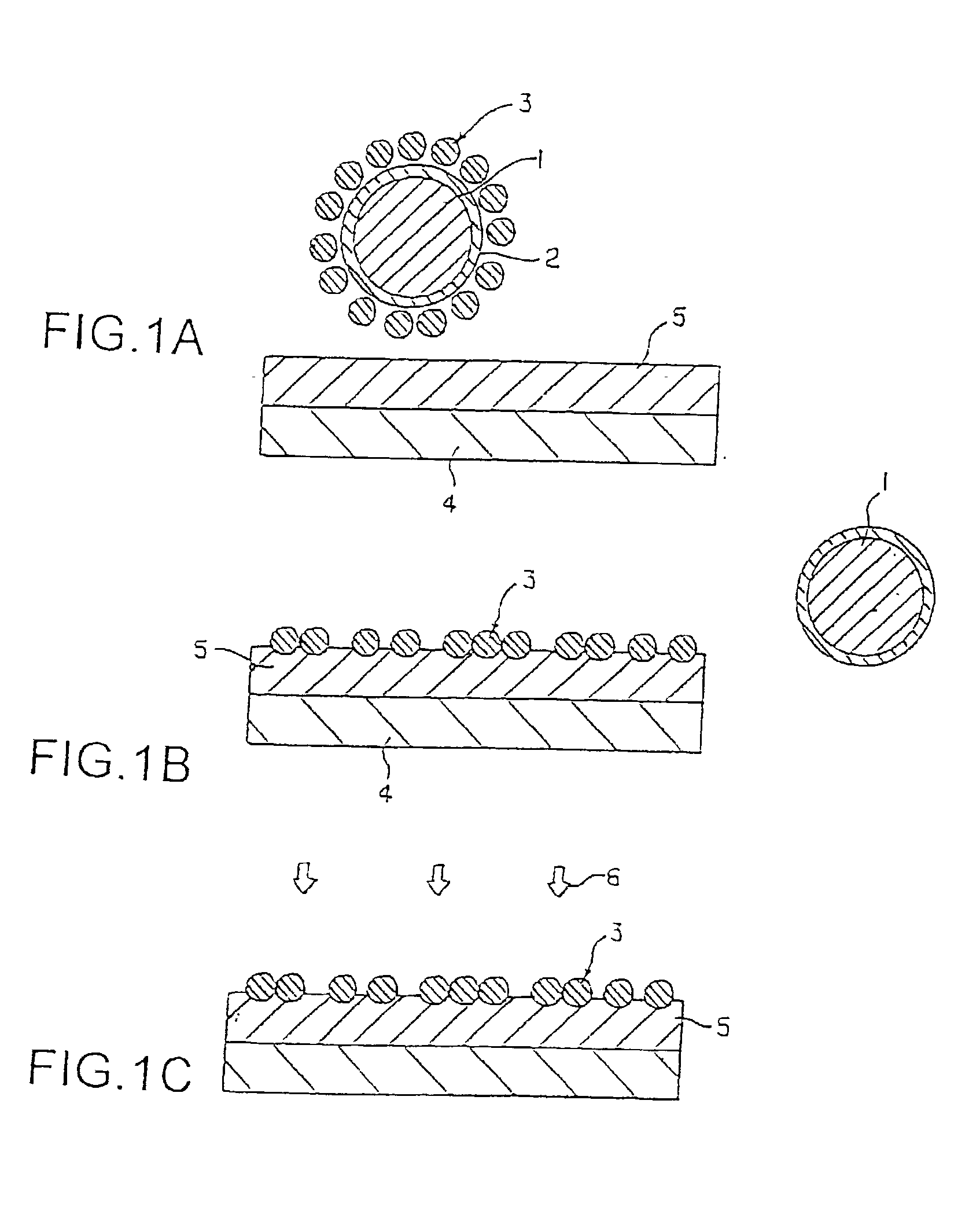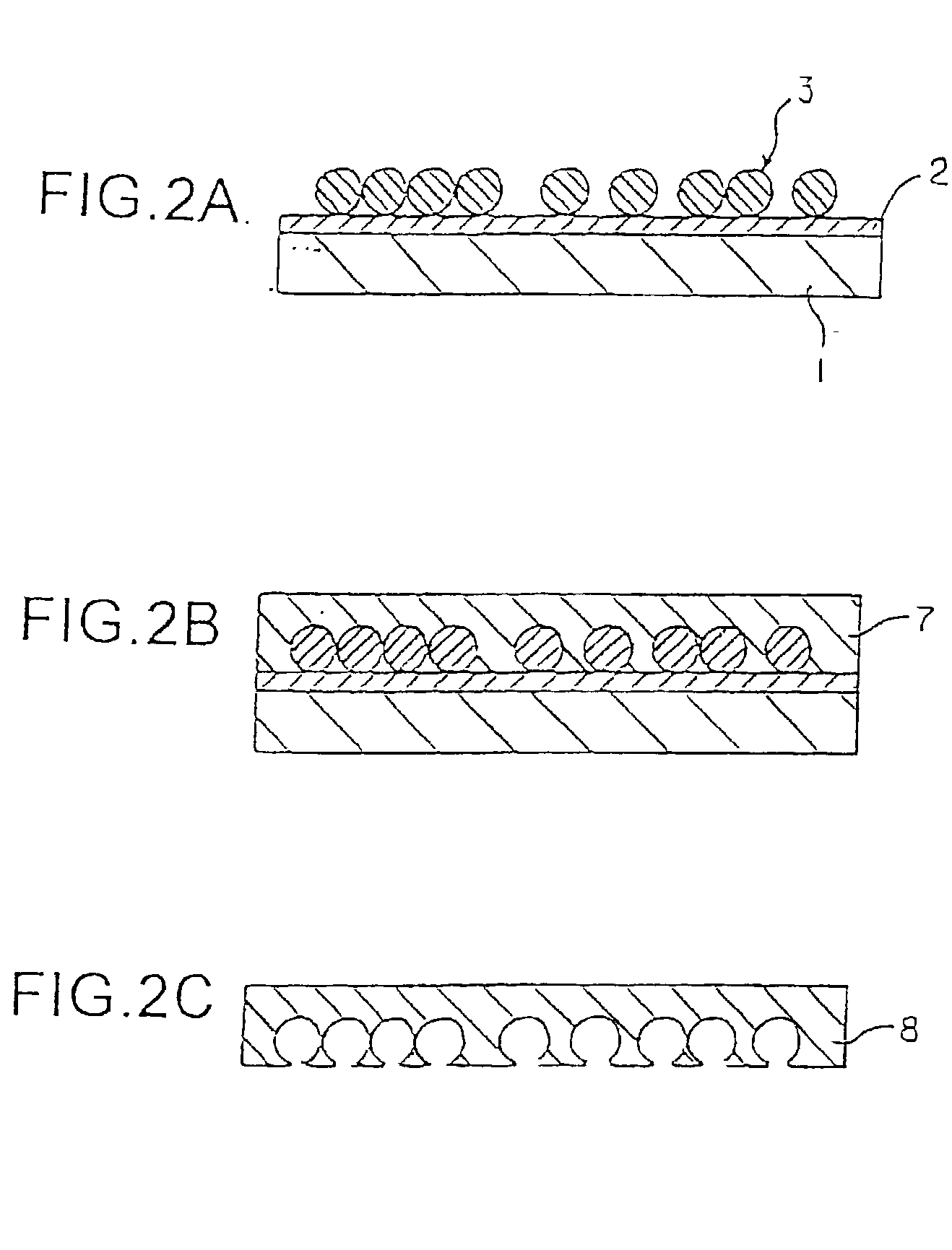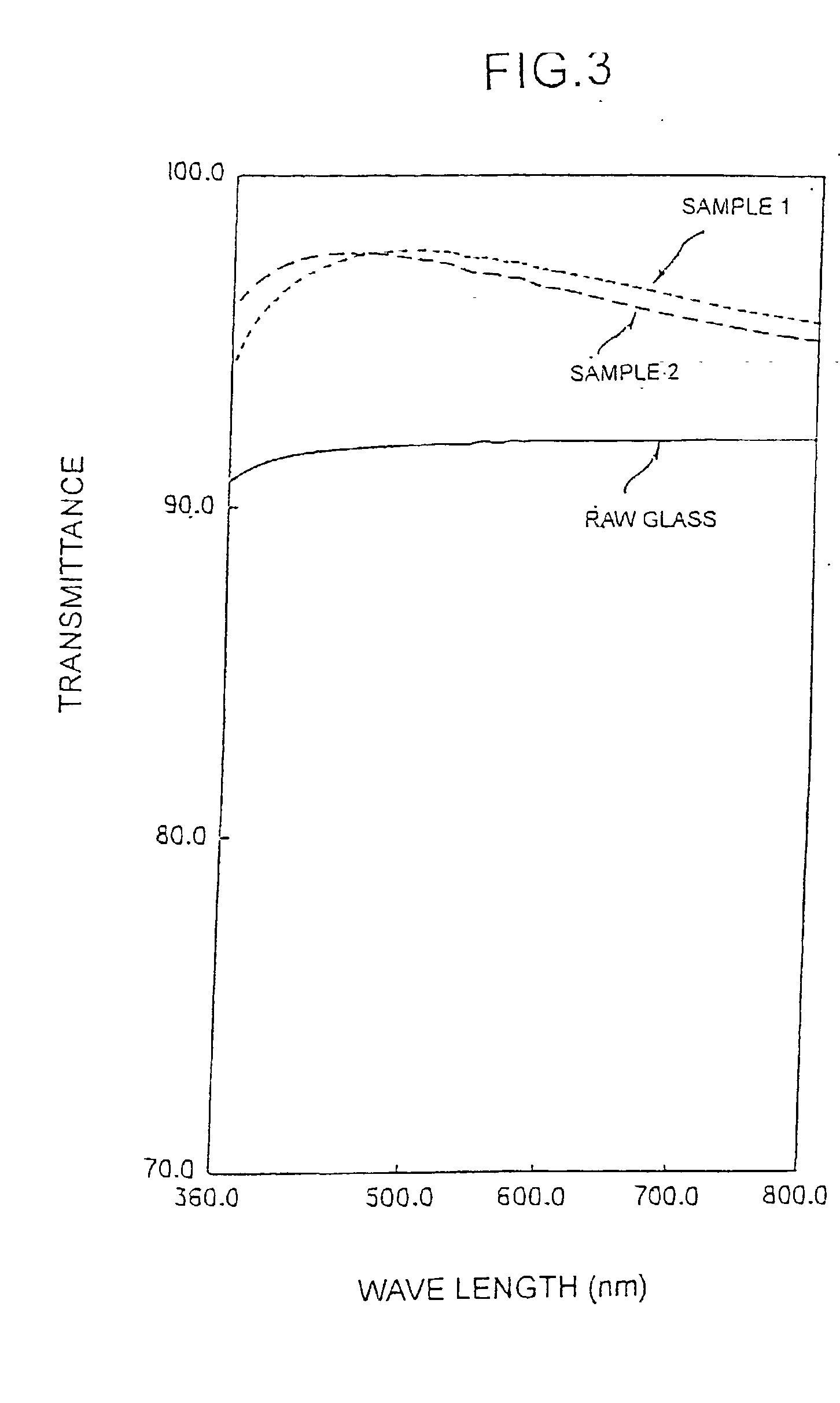Antireflection film and method for manufacturing the same
a technology of anti-reflection film and manufacturing method, which is applied in the direction of instruments, cellulosic plastic layered products, natural mineral layered products, etc., can solve the problems of not raising the coating rate so high, difficult to provide a uniform coating operation, and failing to provide a method with high cost performance, so as to improve the firm-forming rate and avoid the effect of affecting visibility
- Summary
- Abstract
- Description
- Claims
- Application Information
AI Technical Summary
Benefits of technology
Problems solved by technology
Method used
Image
Examples
example 1
Charge Application to a Substrate: Formation of a Polymer Electrolyte Film
[0157] By using an alternate adsorption film forming method, an aqueous solution (dissolved in pure water) of polydiallyldimethyl ammonium chloride(PDDA) (20 mM) (monomer unit conversion) (made by Aldrich Co., Ltd., molecular weight: 100,000 to 200,000) and an aqueous solution (dissolved in pure water) of polystyrene sulfonate sodium salt (PSS) (20 mM) (monomer unit conversion) (made by Aldrich Co., Ltd., molecular weight: 70,000) were applied so that alternate adsorption films were formed on both of the surfaces of a glass substrate. The formation of the uppermost layer was carried out by using PDDA. (Formation of a single particle film: formation of a fine particle layer)
[0158] The above-mentioned base material was immersed in silica sol (made by Nissan Chemical Industries, Ltd.: Snow Tech ZL, particle size: 70 to 100 nm) for 30 seconds at room temperature, and then this was sufficiently cleaned, and dried t...
example 2
Charge Application to a Substrate: Formation of a Polymer Electrolyte Film
[0159] A cationic polymer electrolyte (made by Dai-Ichi Kogyo Seiyaku Co., Ltd., C-200H) ultra-thin film was formed on a surface of a glass substrate by a spin coating method.
Formation of a Single Particle Film: Formation of a Fine Particle Layer
[0160] By using the same silica sol as Example 1, and a single particle film was formed on one side face of a substrate in the same manner as Example 1; thus, sample 2 was prepared.
example 3
Charge Application to a Substrate: Formation of a Polymer Electrolyte Film
[0161] A tri-acetylated cellulose (TAC) film was processed for two minutes at 70.degree. C. in an aqueous solution of 2-normal potassium hydroxide, and the surface thereof was subjected to a hydrophilic-property-applying treatment. After the treatment, the TAC film was used so as to form an alternate adsorption film on the film surface by using an aqueous solution in which PDDA and PSS were dissolved in 0.1M NaCl solution at the same concentrations as Example 1.
Formation of a Single Particle Film: Formation of a Fine Particle Layer
[0162] By using the same materials as Example 1, the above-mentioned base material was processed in the same manner to prepare sample 3 on both of the surfaces of which single particle films were formed.
PUM
| Property | Measurement | Unit |
|---|---|---|
| thickness | aaaaa | aaaaa |
| particle size | aaaaa | aaaaa |
| thickness | aaaaa | aaaaa |
Abstract
Description
Claims
Application Information
 Login to View More
Login to View More - R&D
- Intellectual Property
- Life Sciences
- Materials
- Tech Scout
- Unparalleled Data Quality
- Higher Quality Content
- 60% Fewer Hallucinations
Browse by: Latest US Patents, China's latest patents, Technical Efficacy Thesaurus, Application Domain, Technology Topic, Popular Technical Reports.
© 2025 PatSnap. All rights reserved.Legal|Privacy policy|Modern Slavery Act Transparency Statement|Sitemap|About US| Contact US: help@patsnap.com



